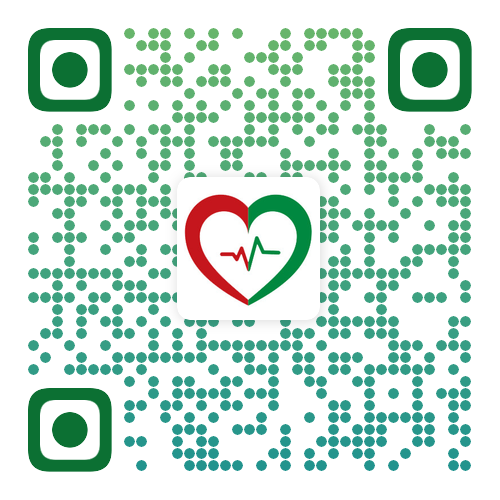


基于单袖带测量的动脉僵硬指标与常用指标的临床意义比较
Shunsuke Komatsu,Hirofumi Tomiyama*,Kazutaka Kimura,Chisa Matsumoto,Kazuki Shiina,Akira Yamashina
东京医科大学心脏病学系,东京,160-0023,日本
*通讯作者:东京医科大学心脏病科, 电话:+81 3 3342 6111; 传真:+81 3 3342 4820; 电子邮件地址:tomiyama@tokyo-med.ac.jp(H. Tomiyama)
摘要
背景:我们研究了以下内容:(1)是否新的简易、与动脉硬化/中心血液动力学有关的指标[即动脉压力-容积指数(API)和动脉血流速度脉搏指数(AVI)]与临床上常用的指标[臂-踝脉搏波速度(baPWV)和桡动脉增强指数(rAI)]可以相互替换;(2)是否新的反映血管损伤的简易指标与常用指标一样可靠;(3)这些新的简易指标反映了哪些心血管危险因素。
方法:我们对连续入院的心血管疾病和/或有心血管危险因素的患者(n=322)进行诊治的同时测量API、AVI、baPWV和rAI。
结果:API与baPWV相关(R=0.492,p<0.001),且AVI与rAI相关(R=0.462,p<0.001)。在接受冠状动脉造影的患者(CAG组:n=152)中,API、AVI、baPWV和rAI值均高于非冠状动脉造影患者(非CAG组:n=170)。在对混杂因素进行校正后,CAG组中只有AVI高于非CAG组。多元线性回归分析显示,在校正后年龄和收缩压与API和AVI独立相关。
结论:在心血管疾病或有心血管危险因素的患者中,新的简易指标和常用指标在评估血管损伤和/或心血管风险不能互换。此外,建议进一步研究是否AVI在心血管疾病患者中高于没有心血管疾病史的患者。与常用标记物类似,年龄和血压显著影响两种新标记物。因此,在解释这些新的简易指标的变化时,需要考虑年龄和血压因素。
前言
动脉粥样硬化和/或衰老相关的血管损伤与动脉硬度的增加和动脉网异常的压力波反射有关[1–3]。动脉僵硬和与之相关的压力波反射作为心血管疾病的独立危险因素受到了广泛关注[1–3]。传统上,颈-股动脉搏动波速度(cfPWV)和主动脉增强指数(aAI)已被用作反映这些病理生理异常的指标[1–3]。此外,更容易测量的指标,如肱-踝脉搏波传导速度(baPWV)和桡动脉增强指数(rAI),也已成为常用的指标[4]。尽管如此,由于在临床上需要应用这些指标的患者人群巨大,因此人们已经在寻求更简易的测量标记物。最近,通过用普通的臂动脉血压袖带记录的肱动脉脉波的压力波分析获得的动脉压力-容积指数(API)和动脉血流速度脉搏指数(AVI)已在临床得以应用[5,6]。 API被认为与脉搏波传导速度有关,而AVI被认为与增强指数有关。然而,这些新的简易指标是否足以反映血管损伤仍有待充分验证,并且尚不清楚它们可能与哪些心血管危险因素有关。
在这个横断面研究中,我们对连续入院的心血管疾病和/或有心血管危险因素的患者进行同时检测新的简易指标和常用指标(baPWV和rAI)。我们研究了以下内容:(1)是否新的简易指标与常用的指标(baPWV和rAI)在临床上可以相换;(2)是否新的反映血管损伤的简易指标与常用指标一样可靠;(3)这些新的简易指标反映了哪些心血管危险因素。
参考文献:
[1] O’Rourke MF, Hashimoto J. Mechanical factors in arterial aging: a clinical perspective. J Am Coll Cardiol 2007;50: 1–13.
[2] Tomiyama H, Yamashina A. Non-invasive vascular function tests: their pathophysiological background and clinical application. Circ J 2010;74: 24–33.
[3] Townsend RR, Wilkinson IB, Schiffrin EL, Avolio AP, Chirinos JA, Cockcroft JR, Heffernan KS, Lakatta EG, McEniery CM, Mitchell GF, Najjar SS, Nichols WW, Urbina EM, Weber T, American Heart Association Council on Hypertension. Recommendations for Improving and Standardizing Vascular Research on Arterial Stiffness. A scientific statement from the American Heart Association. Hypertension 2015;66: 698–722.
[4] http: //www.j-circ.or.jp/guideline/pdf/JCS2013_yamashina.
[5] Komine H, Asai Y, Yokoi T, Yoshizawa M. Non-invasive assessment of arterial stiffness using oscillometric blood pressure measurement. Biomed Eng Online 2012;11: 6. http: //dx.doi.org/10.1186/1475-925X-11-6.
[6] Sueta D, Yamamoto E, Tanaka T, Hirata Y, Sakamoto K, Tsujita K, Kojima S, Nishiyama K, Kaikita K, Hokimoto S, Jinnouchi H, Ogawa H. The accuracy of central blood pressure waveform by novel mathematical transformation of non-invasive measurement. Int J Cardiol 2015;189: 244–6.
[7] Tomiyama H, Yamazaki M, Sagawa Y, Teraoka K, Shirota T, Miyawaki Y, Yamashina A. Synergistic effect of smoking and blood pressure on augmentation index in men, but not in women. Hypertens Res 2009;32: 122–6.
[8] Yamashina A, Tomiyama H, Takeda K, Tsuda H, Arai T, Hirose K, Koji Y, Hori S, Yamamoto Y. Validity, reproducibility, and clinical significance of noninvasive brachial-ankle pulse wave velocity measurement. Hypertens Res 2002;25: 359–64.
[9] Horio M, Imai E, Yasuda Y, Watanabe T, Matsuo S. Modification of the CKD epidemiology collaboration (CKD-EPI) equation for Japanese: accuracy and use for population estimates. Am J Kidney Dis 2010;56: 32–8.
[10] Koji Y, Tomiyama H, Ichihashi H, Nagae T, Tanaka N, Takazawa K, Ishimaru S, Yamashina A. Comparison of ankle-brachial pressure index and pulse wave velocity as markers of the presence of coronary artery disease in subjects with a high risk of atherosclerotic cardiovascular disease. Am J Cardiol 2004;94: 868–72.
[11] Imanishi R, Seto S, Toda G, Yoshida M, Ohtsuru A, Koide Y, Baba T, Yano K. High brachial-ankle pulse wave velocity is an independent predictor of the presence of coronary artery disease in men. Hypertens Res 2004;27: 71–8.
[12] Kotecha D, New G, Collins P, Eccleston D, Krum H, Pepper J, Flather MD. Radial artery pulse wave analysis for non-invasive assessment of coronary artery disease. Int J Cardiol 2013;167: 917–24.
[13] Otsuka T, Kawada T, Ibuki C, Kusama Y. Obesity as an independent influential factor for reduced radial arterial wave reflection in a middle-aged Japanese male population. Hypertens Res 2009;32: 387–91.
[14] Maple-Brown LJ, Piers LS, O’Rourke MF, Celermajer DS, O’Dea K. Central obesity is associated with reduced peripheral wave reflection in indigenous Australians irrespective of diabetes status. J Hypertens 2005;23: 1403–7.













扫一扫,添加客服微信